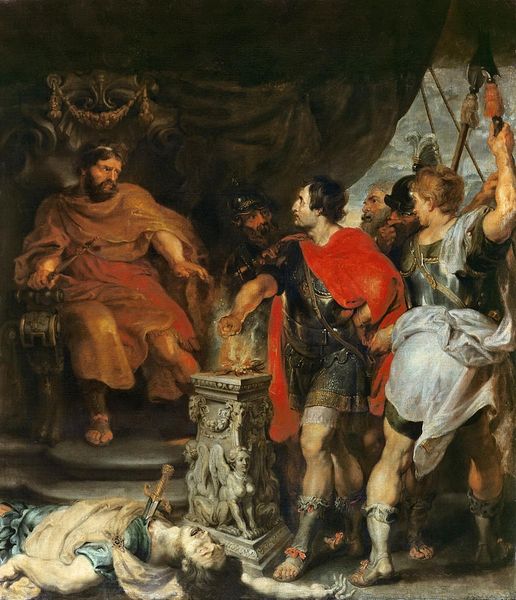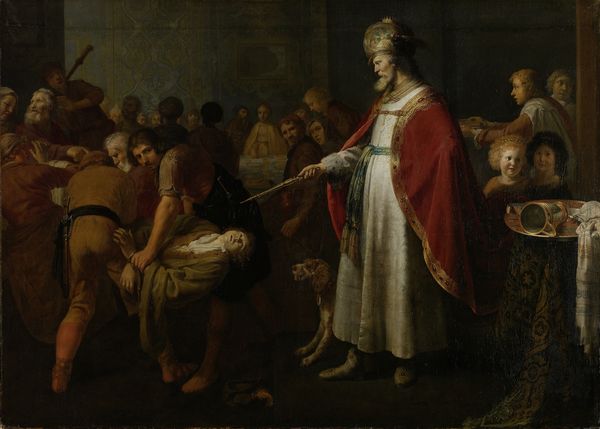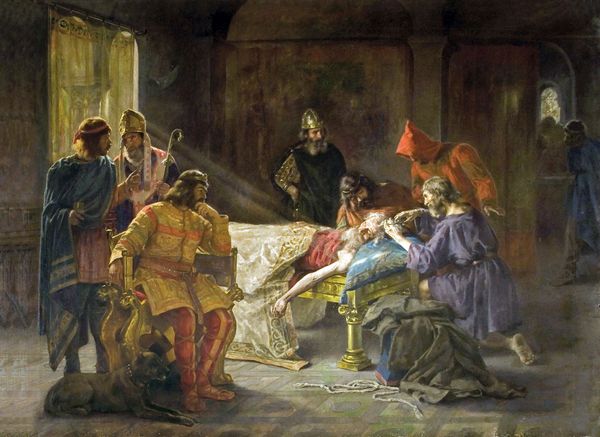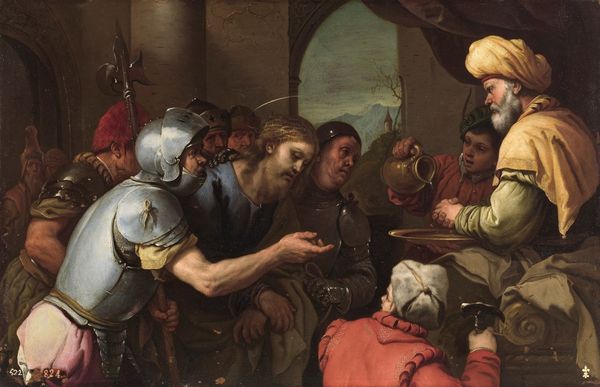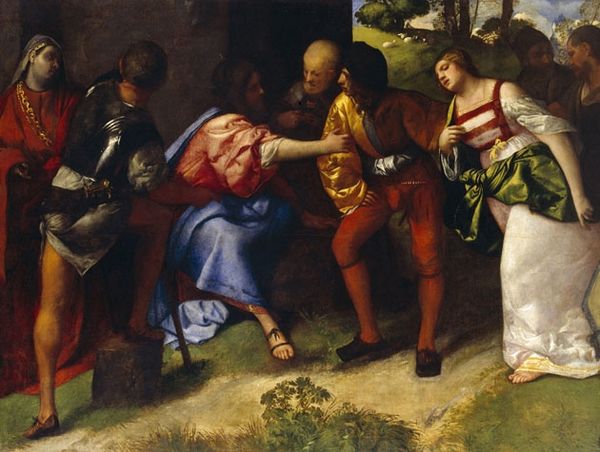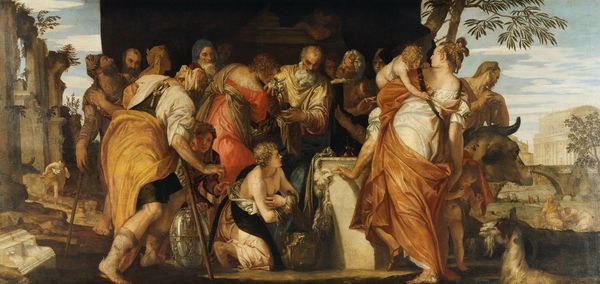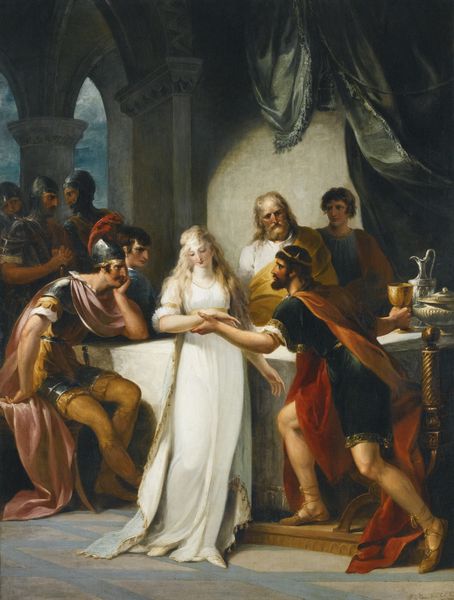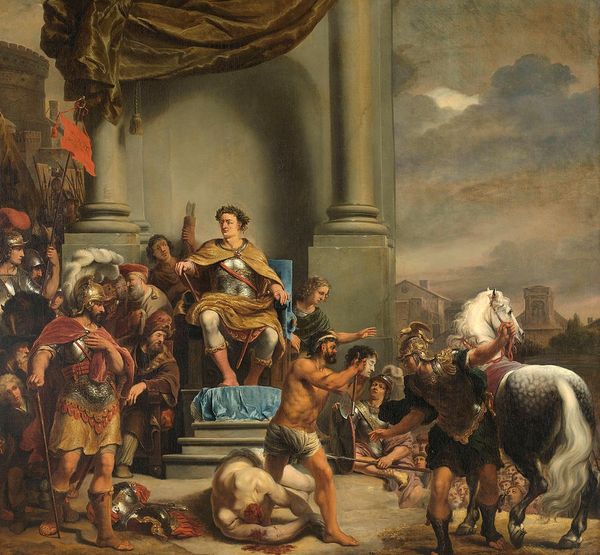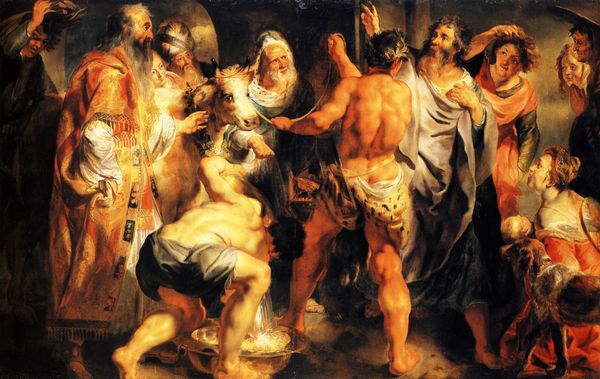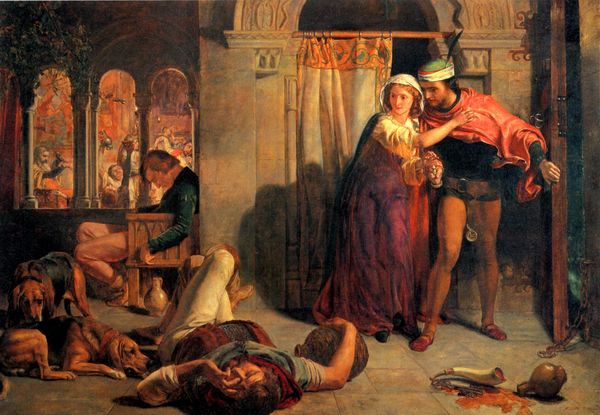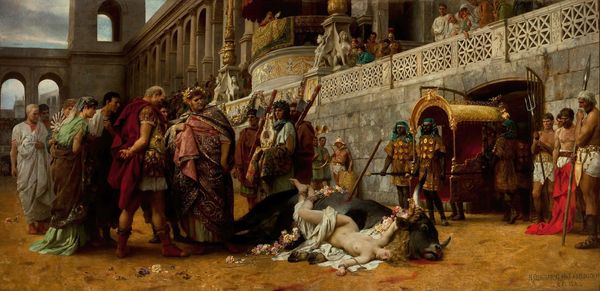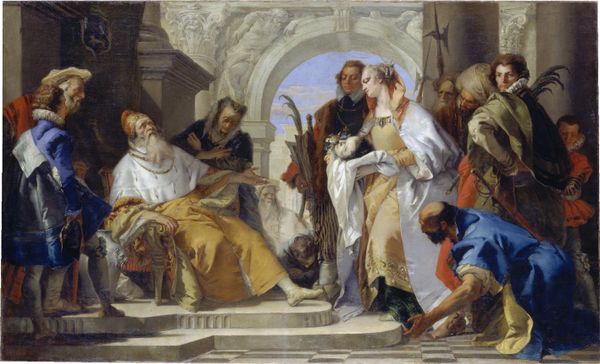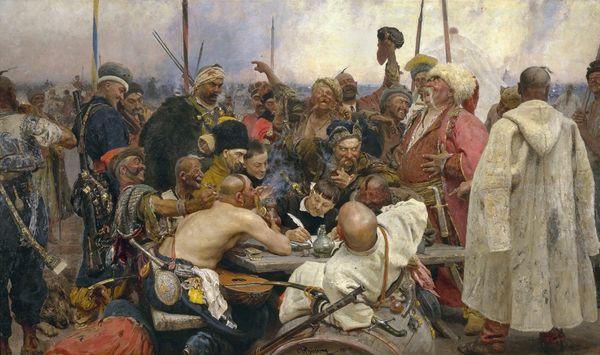
oil-paint
#
portrait
#
narrative-art
#
baroque
#
dutch-golden-age
#
oil-paint
#
figuration
#
oil painting
#
history-painting
Copyright: Public domain
Editor: Here we have Gerard van Honthorst's oil painting, "Solon Before Croesus," created in 1624. My first thought is how opulent the scene appears. The king is draped in extravagant robes, and there's a pot overflowing with gold. But then, right next to him, is this kneeling, bound figure. How do you interpret this contrast? Curator: The painting highlights the precarious nature of wealth and power, doesn’t it? Consider the historical context: Honthorst painted this during the Dutch Golden Age, a period of immense prosperity built on global trade, including exploitative colonial practices. Isn't Croesus's display of wealth almost a challenge to fate, or even morality, when so many are subjugated or exploited? And who is really "free" in this image? Croesus, in his gilded cage? Editor: So, the painting critiques wealth and tyranny, but also the reliance of that wealth on exploited people? Curator: Exactly. The seemingly stark contrast isn't merely a visual technique but a deliberate commentary. We see Solon, the wise lawgiver, standing before Croesus, who believes himself to be the happiest man due to his riches. Solon is said to have warned Croesus that true happiness cannot be judged until a life is over, that fortune can change in an instant. Who truly has power, the king on the throne, or the lawgiver? Editor: That adds another layer. Is the shackled figure a reference to something similar? Curator: One might interpret the kneeling man, in chains, as a representation of subjugated people whose labour or resources fuelled Croesus’s lifestyle. Perhaps even the instability beneath all that glitter. The Baroque style often uses stark contrasts to deliver dramatic impact, but in this case, I believe it serves to expose the fragility and moral complexities underlying material wealth. Editor: I see. It's not just a portrait of power, but an interrogation of its foundations and consequences. Thank you, I will think of it differently from now on. Curator: Indeed. Art provides space for continuous re-evaluation of culture. I think understanding context enables the artist to connect past with present injustices.
Comments
No comments
Be the first to comment and join the conversation on the ultimate creative platform.

